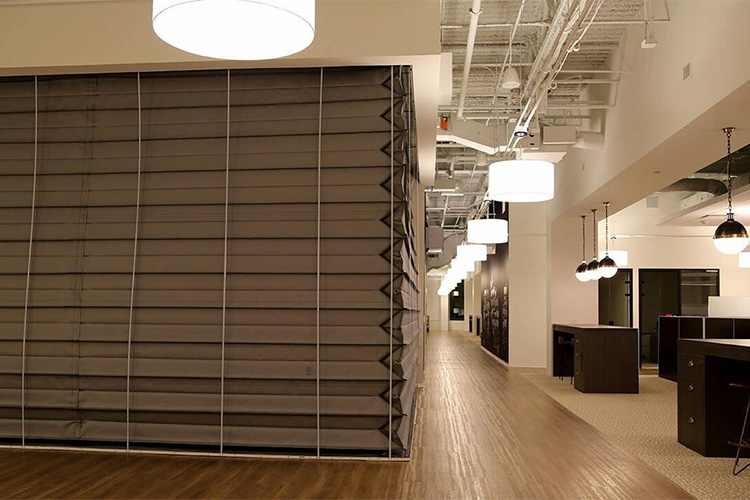8 Essential Solutions to Improve Hospital Fire Safety
April 11, 2023
A fire in any type of building can cause injury, property damage and even death. A fire in a healthcare facility — where people may not be able to leave their beds and where there are volatile chemicals present — poses an especially serious threat.
Hospitals, medical clinics, nursing homes and other healthcare institutions are all concerned with fire prevention. Here are some key elements to consider when developing and executing fire safety measures at a healthcare facility.
Importance of Fire Safety in Hospitals
Despite the fact that hospitals are some of the most heavily regulated buildings in terms of fire safety, fires still occur with alarming frequency. According to a study by the National Fire Protection Association, between 2012 and 2014, there were an estimated 5,700 structural fires in healthcare properties. Most fires are relatively small and cause only minor damage, but they can still lead to serious injury or even death.
Statistics on Hospital Fires
Some common causes of fire and smoke damage in healthcare facilities are:
- Cooking Equipment — More healthcare facility fires occur in the kitchen than in any other area, with 60% of confined fires taking place there. The most common time for these fires is between noon and 1 p.m. when staff prepares meals.
- Cigarettes or Other Smoking Materials — When used carelessly, these materials can be quite dangerous. If there’s a designated smoking area, introduce sturdy metal ashtrays that can't be easily tipped over. Make sure no one smokes near oxygen tanks.
- Power Outages — These affect most hospital devices and medical equipment, which represent 10% or less of all fire events. The damage is generally limited to the circuit panel with operating controls.
2 Main Categories of Protection for Hospital Fire Safety
There are two main categories of fire safety mitigation measures:
Active Fire Protection
Active fire protection refers to systems that operate automatically in response to a fire. The flame energizes active systems, and the reaction may be manual or programmed.
Passive Fire Protection
Passive fire protection does not require active intervention to work. It forms an essential barrier between people and the blaze to reduce the damage done to a building and its contents. There are three main ways to achieve this:
- Blocking or slowing down the travel of heat, smoke and flames through compartments via doors, windowsills and recessed areas
- Acting as a physical buffer between rooms (i.e. putting space between potential sources of ignition or fuel)
- Isolating utilities, such as electrical switchboards
8 Solutions to Improve Fire Safety in Hospitals
1. Planned Escape Routes
In case of an emergency, it is crucial to have a fire safety and evacuation plan in place. Make sure all employees are knowledgeable of safety procedures. To be fully prepared, conduct regular fire drills so that everyone knows their designated evacuation routes and what actions to take in case of a fire.
2. Smoke Alarms
One of the most important aspects of hospital fire safety is the use of smoke alarms. Smoke alarms provide an early warning system that can alert patients, staff and visitors to a fire. They can be installed in all areas of a hospital, including patient rooms, corridors and stairwells. In addition, smoke alarms can be connected to the hospital's central fire alarm system, giving first responders the opportunity to immediately respond to a fire emergency.
3. Emergency Escape Lighting
In the event of a fire, escape lighting can help guide people to the nearest exit while also providing a clear path to safety. This can be vital in a hospital, where patients may be disoriented or unfamiliar with their surroundings. Emergency escape lighting can also help identify potential hazards, such as smoke-filled rooms or areas of dense smoke. In addition, emergency escape lighting can help prevent panic by providing a clear path to safety.
4. Public Address Voice Alarm
Voice alarms can provide clear and concise instructions in the event of a fire to help ensure that everyone in the building knows what to do. They can also be used to provide updates on the situation and give evacuees peace of mind. In addition, voice alarm systems are often linked to other fire safety systems, such as sprinklers and fire doors, which can further improve safety.
5. Elevator Smoke Curtains
One of the most important passive elements of fire safety in a hospital is the installation of elevator smoke curtains. Smoke curtains are designed to seal off an elevator shaft, which is usually the largest open pathway for fire and smoke to travel uninhibited and spread to other floors. The best curtain designs allow anyone using the elevator to quickly escape and then automatically reseal the opening.
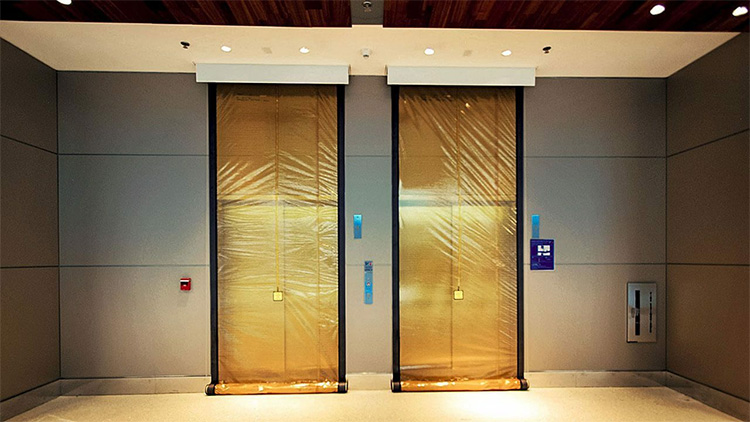
6. Vertical Fire and Smoke Curtains
Unlike fire and smoke mitigation systems built-in to the design of a building, such as fire doors, vertical smoke curtains can be deployed to target the specific room or compartment where the fire is located.
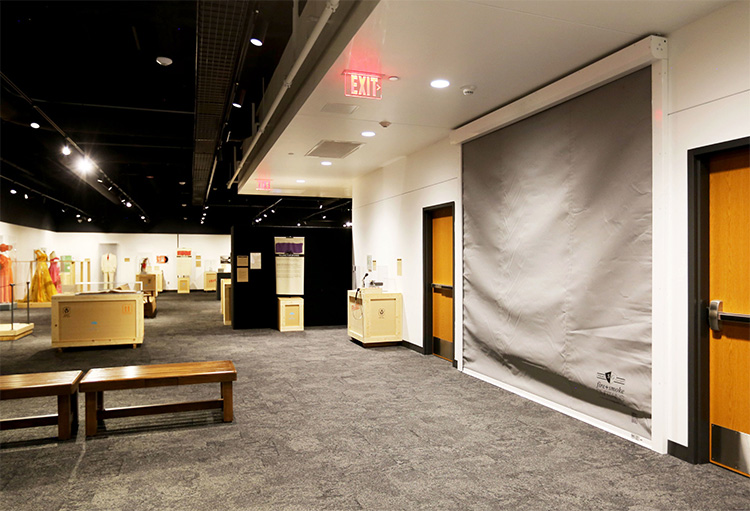
They deploy from the ceiling and rapidly close off large wall openings, choking the fire by denying the oxygen source, as well as containing the spread of smoke within the affected space. When used in conjunction with a central fire control station, first responders can actuate these curtains proactively before the system senses a fire to provide clear paths of escape for staff and residents.
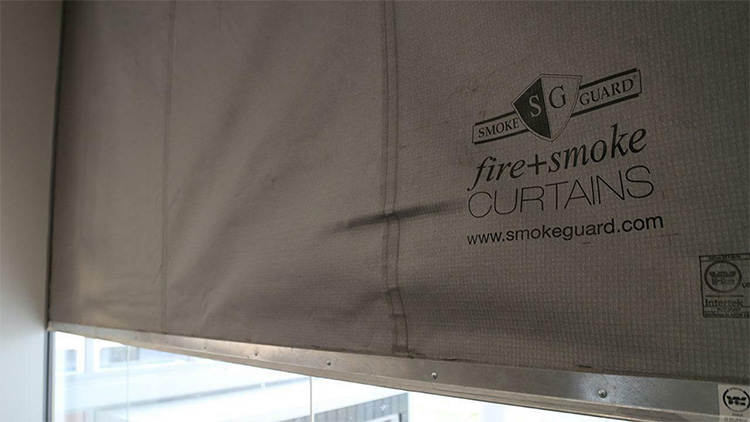
7. Horizontal Fire and Smoke Curtains
Most modern building designs will contain openings in the ceilings for aesthetic purposes. Like an elevator shaft, these horizontal breaches allow a fire and associated smoke to quickly fill the floors above it. Horizontal fire and smoke curtains quickly close, ensuring that fire and smoke are contained while other removal systems operate to clear the affected area.
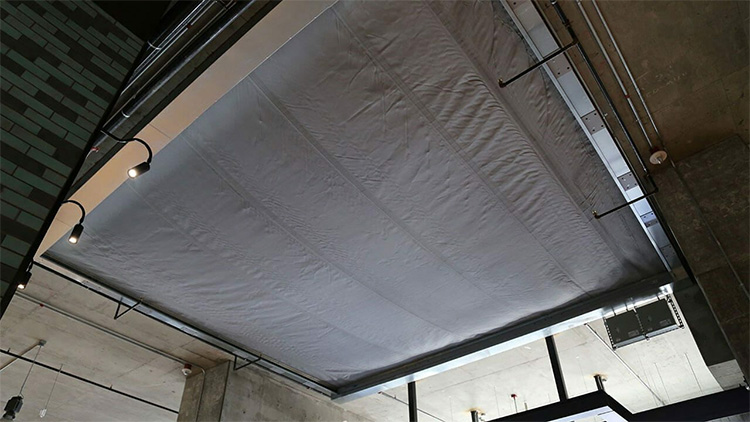
8. Perimeter Fire and Smoke Curtains
In the event of a fire, the most important concern is the safe evacuation of personnel from the building. If the fire causes the shutdown of electrical systems, the elevators may not operate, leaving stairwells as the primary evacuation route.
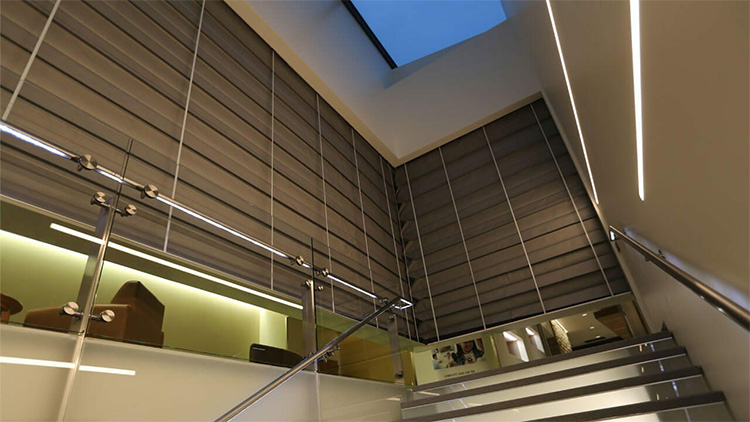
A smoke-resistant fire curtain can be used to protect stairwells and escalators from smoke and flames, as well as offer a reservoir for smoke on the upper floors of an atrium or other open space. A perimeter curtain can be used in addition to existing mechanical smoke and fire suppression systems or additional fire curtains to create a successful combination.
Smoke Guard Provides the Most Effective Fire and Smoke Protection for Hospital Safety
When it comes to hospital fire safety, Smoke Guard is a trusted name. Since 1991, we have provided the best-in-industry protection against fire and smoke. Our products are designed to quickly contain the spread of smoke and fire, and we can design a system for your new construction project or provide solutions that can help modify older installations to be more effective.
Want to get started? Contact us today for pricing or general product inquiries.
@smokeguard #smokeguard #firesafety #firecurtain #smokecurtain
Company: Smoke Guard, Inc.
Source: https://smokeguard.com/blog/2023/march/09/8-essential-solutions-to-improve-hospital-fire-safety
Tags:
Access Control
Top 4 things to think about when specifying fire and smoke curtains (February 9, 2023), Fire and Safety Protection in High-Traffic Student Spaces (January 11, 2023), Portable steel security buildings to upgrade your perimeter protection plan (January 9, 2023), LadderPort™ - the Safer, Less Expensive Alternative To Vertical Ladders (December 26, 2022), Ballistic entryways, access control vestibules and custom-fabricated entryways (December 9, 2022)
Fire Resistant
Top 4 things to think about when specifying fire and smoke curtains (February 9, 2023), Fire rated door and frame assemblies (February 7, 2023), Backdraft and pressure relief dampers (January 31, 2023), Fire and Safety Protection in High-Traffic Student Spaces (January 11, 2023), Sheet lead: a quick and cost-effective method to efficiently shield radiation (December 16, 2022), 4 Innovative Fire Protection Technologies for 2022 (November 16, 2022)


